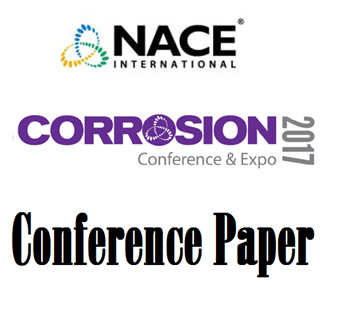Search
Products tagged with 'corrosion inhibitor'
View as
Sort by
Display
per page
Redefining Conventional, with Biobased Alternatives
Product Number:
51324-20797-SG
Publication Date:
2024
$40.00
Residual Analysis Assay For Thiol-Based VCI Quantification In Top-Of-Line Corrosion Environments
Product Number:
51322-17918-SG
Publication Date:
2022
$20.00
Shortcomings regarding the Testing of Oil and Gas Corrosion Inhibitors
Product Number:
51324-20823-SG
Publication Date:
2024
$40.00
Specialty Corrosion Inhibitor Successfully Inhibits Offshore Corrosive Mercury-Containing Gas Stream Offering
Product Number:
MECC23-19889-SG
Publication Date:
2023
$20.00
Surfactant Corrosion Inhibitor Adsorption and Desorption Kinetics in Aqueous CO2-Containing Environments
Product Number:
51324-20915-SG
Publication Date:
2024
$40.00
Tailoring Chemicals for Continuous Injection Downhole via Capillary Line and “Sensitive” Jewelry
Product Number:
51317--9108-SG
ISBN:
9108 2017 CP
Publication Date:
2017
$20.00
Technical Paper: Petroleum-Based Corrosion Inhibitor
Product Number:
41206-268-SG
Publication Date:
2006
$20.00
The Effect Of Sulfur Components Of Corrosion Inhibitors On Chemical Qualification
Product Number:
51322-17801-SG
Publication Date:
2022
$20.00
The Performance Of HPHT Corrosion Inhibitor At Offshore Downhole Sour Conditions
Product Number:
51322-17752-SG
Publication Date:
2022
$20.00
The Performance Study of High-Temperature, High-Pressure (HTHP) Corrosion Inhibitors at Sour Conditions
Product Number:
MECC23-20051-SG
Publication Date:
2023
$20.00
The Performance Tests of HPHT Corrosion Inhibitor at Onshore Downhole Sour Conditions
Product Number:
51323-19242-SG
Publication Date:
2023
$20.00
Understanding of Corrosion Inhibitor Behavior through Interaction between Stearic Acid and Alkane
Product Number:
51324-20900-SG
Publication Date:
2024
$40.00












